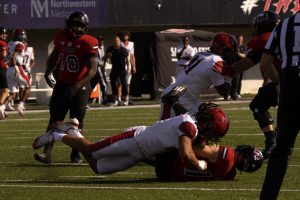Crime statistics withheld from students
November 8, 1990
Colleges and universities will not have to report crime statistics until 1992 even though a right-to-know act might be made a law by Friday.
President George Bush could sign the Student Right to Know Act 1990 this week, but the act is conditional upon giving school’s enough time to prepare.
“It’s a stalling technique,” said Mark Goodman, executive director of the Student Press Law Center in Washington, D.C. He said college and university lobbyists persuaded Congress to extend the start date because they said “it would take a lot of time to compile (police and campus safety) records.”
Goodman said university staffs that felt they needed extra time to compile such records were more concerned with maintaning their images than with protecting students.
He also said the original form of the act required the information to not only include off-campus crime statistics but that it be published in undergraduate and graduate catalogs put out by universities.
However, Goodman said university lobbyists pursuaded Congress to make the information available to students strictly on a request-only basis.
“Not knowing what’s going on off-campus is not knowing what’s going on with students,” Goodman said. “If colleges and universities wanted to make (campuses) safer, they’d give immediate access to police and campus safety reports.”
NIU Judicial Officer Larry Bolles supports the bill, but said he feels it leaves some ends untied.
“The bill is a good one concerning everything that has happened recently on college campuses,” Bolles said.
But Bolles said parents most likely will not know where or how to find information on campus crime. He said there is confusion surrounding how the information will be provided and some question about who is responsible for providing it.
He said anyone who asks about crime statistics will not be misinformed, but they will have to ask the right people the right questions.






